Lecture The Government Economic Policy Lecture


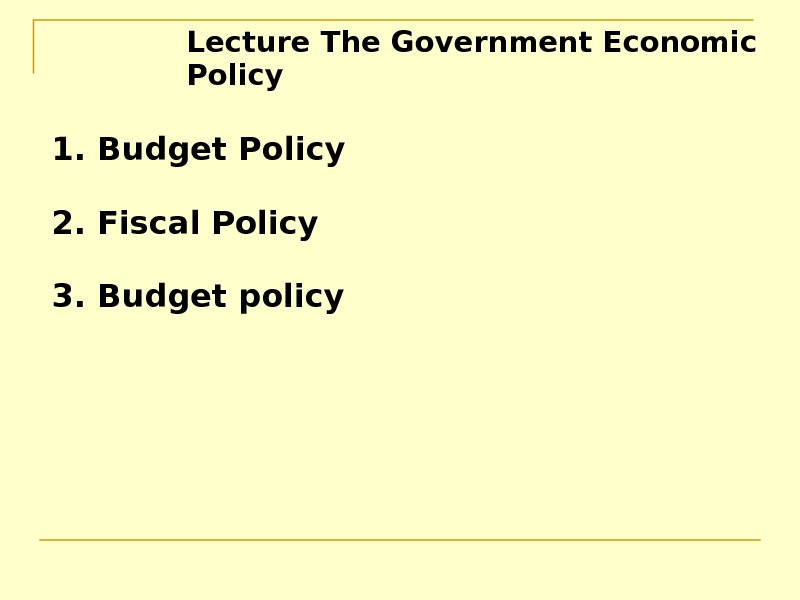

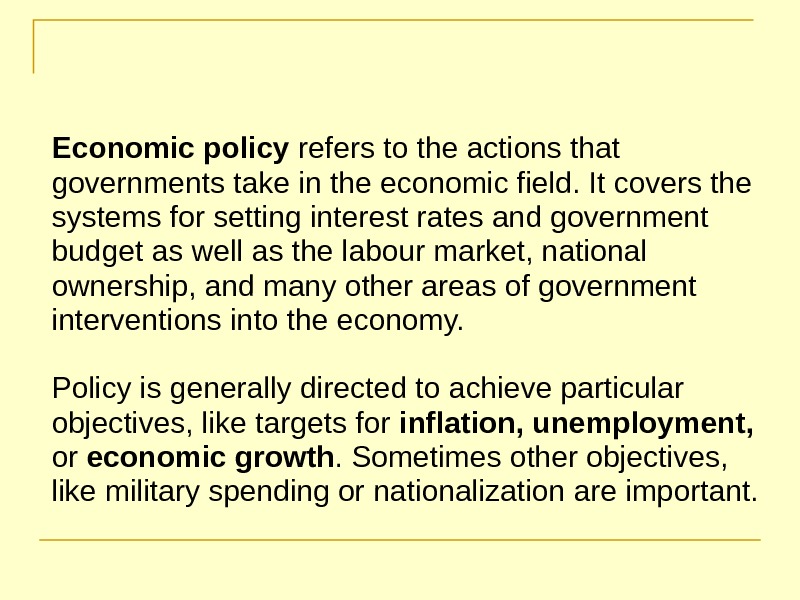



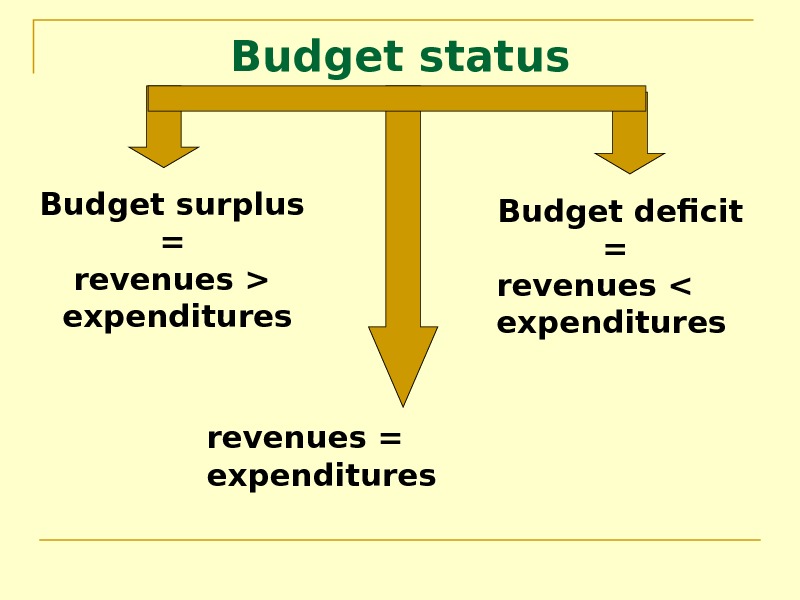




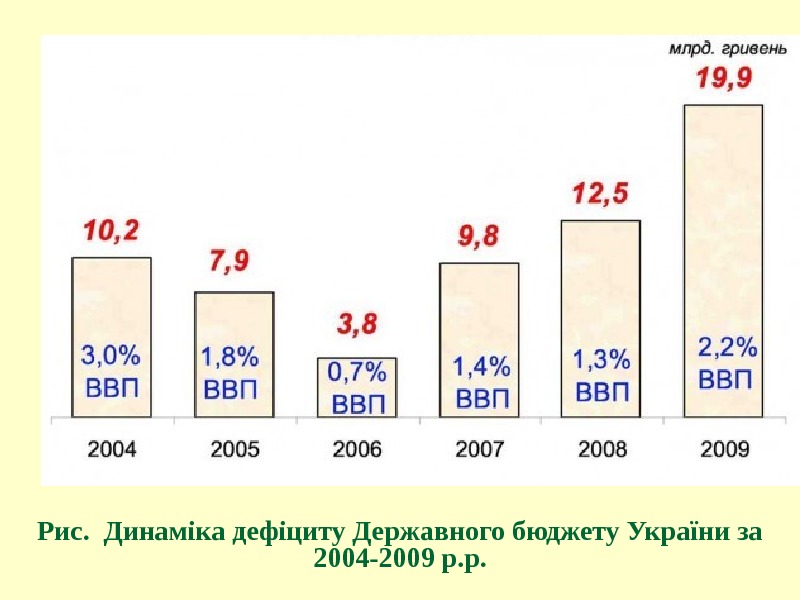
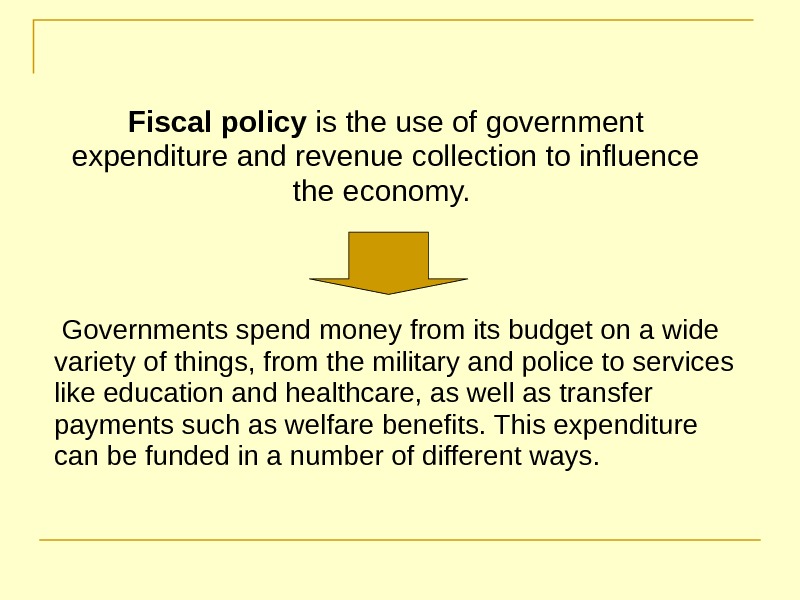





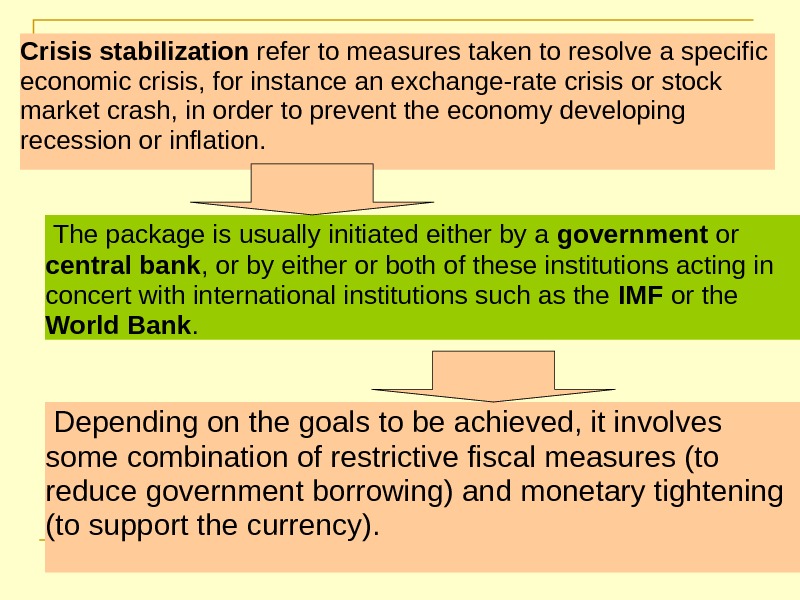
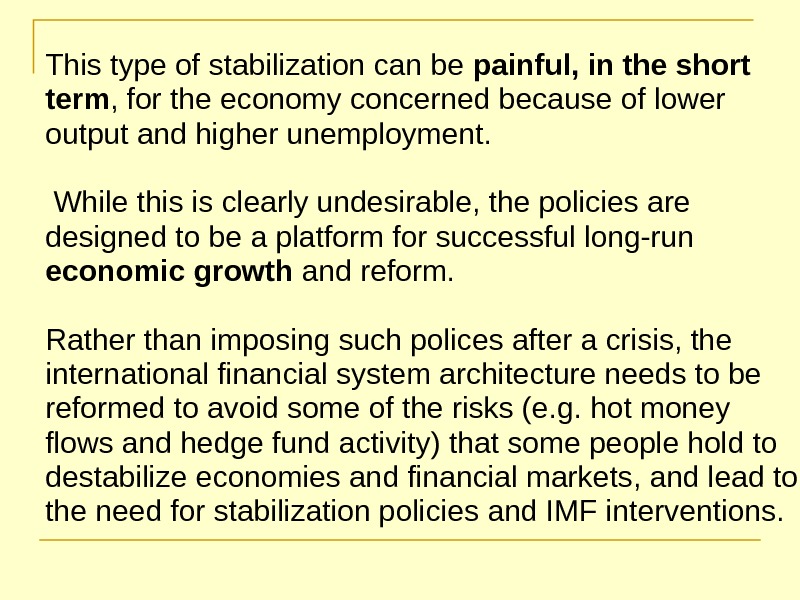

lecture_8_the_government_economic_policy.ppt
- Размер: 3.5 Mегабайта
- Количество слайдов: 22
Описание презентации Lecture The Government Economic Policy Lecture по слайдам
 Lecture The Government Economic Policy
Lecture The Government Economic Policy
 Lecture The Government Economic Policy 1. Budget Policy 2. Fiscal Policy 3. Budget policy
Lecture The Government Economic Policy 1. Budget Policy 2. Fiscal Policy 3. Budget policy
 Key words: Currency board – валютний коридор Contractionary policy – політика грошово-кредитної рестрикції Expansionary policy – політика грошово-кредитної експансії
Key words: Currency board – валютний коридор Contractionary policy – політика грошово-кредитної рестрикції Expansionary policy – політика грошово-кредитної експансії
 Economic policy refers to the actions that governments take in the economic field. It covers the systems for setting interest rates and government budget as well as the labour market, national ownership, and many other areas of government interventions into the economy. Policy is generally directed to achieve particular objectives, like targets for inflation, unemployment, or economic growth. Sometimes other objectives, like military spending or nationalization are important.
Economic policy refers to the actions that governments take in the economic field. It covers the systems for setting interest rates and government budget as well as the labour market, national ownership, and many other areas of government interventions into the economy. Policy is generally directed to achieve particular objectives, like targets for inflation, unemployment, or economic growth. Sometimes other objectives, like military spending or nationalization are important.
 Lecture: The Government Economic Policy Types of economic policy: Budget Policy
Lecture: The Government Economic Policy Types of economic policy: Budget Policy
 Financial plan 2. Balance. R e v e n u e s E x p e n d i t u r e s
Financial plan 2. Balance. R e v e n u e s E x p e n d i t u r e s
 Main tasks of budgeting calculation of of state revenue real volume state expenditures optimization budget balancing
Main tasks of budgeting calculation of of state revenue real volume state expenditures optimization budget balancing
 Budget status Budget surplus = revenues > expenditures revenues = expenditures Budget deficit = revenues < expenditures
Budget status Budget surplus = revenues > expenditures revenues = expenditures Budget deficit = revenues < expenditures
 Government debt ( national debt ) is money (or credit) owed by any level of government; either central government, federal government, municipal government or local government.
Government debt ( national debt ) is money (or credit) owed by any level of government; either central government, federal government, municipal government or local government.
 Government debt can be categorized as internal debt , owed to lenders within the country external debt , owed to foreign lenders
Government debt can be categorized as internal debt , owed to lenders within the country external debt , owed to foreign lenders
 Basic goals of financial policy in conditions of state budget deficit: increase the budgetary borrowing stake in the nonbank sector via mobilizing funds of population, firms and others investors; continuance of the course on uninflationary coverage of deficit with the successive decreasing of external borrowings.
Basic goals of financial policy in conditions of state budget deficit: increase the budgetary borrowing stake in the nonbank sector via mobilizing funds of population, firms and others investors; continuance of the course on uninflationary coverage of deficit with the successive decreasing of external borrowings.
 Доходи Видатки Дефіцит (-)/ профіцит (+) Мл рд. грн. 1996 30, 2 34, 2 -4, 0 1997 28, 1 34, 3 -6, 2 1998 28, 9 31, 2 -2, 3 1999 32, 9 34, 8 -1, 9 2000 49, 1 48, 1 1, 0 2001 54, 9 55, 5 -0, 6 2002 61, 9 60, 3 1, 6 2003 75, 8 -0, 5 2004 91, 5 102, 5 -11, 0 2005 134, 2 142, 0 -7, 8 2006 171, 8 175, 5 -3, 7 2007 219, 9 227, 6 -7, 7 2008 297, 9 312, 0 -14, 1 2009 273, 0 314, 2 — 37, 3 2010 320, 1 379, 8 — 54, 1 Зведений бюджет України у 199 6 – 20 10 р. р.
Доходи Видатки Дефіцит (-)/ профіцит (+) Мл рд. грн. 1996 30, 2 34, 2 -4, 0 1997 28, 1 34, 3 -6, 2 1998 28, 9 31, 2 -2, 3 1999 32, 9 34, 8 -1, 9 2000 49, 1 48, 1 1, 0 2001 54, 9 55, 5 -0, 6 2002 61, 9 60, 3 1, 6 2003 75, 8 -0, 5 2004 91, 5 102, 5 -11, 0 2005 134, 2 142, 0 -7, 8 2006 171, 8 175, 5 -3, 7 2007 219, 9 227, 6 -7, 7 2008 297, 9 312, 0 -14, 1 2009 273, 0 314, 2 — 37, 3 2010 320, 1 379, 8 — 54, 1 Зведений бюджет України у 199 6 – 20 10 р. р.
 Рис. Динаміка дефіциту Державного бюджету України за 2004 -2009 р. р.
Рис. Динаміка дефіциту Державного бюджету України за 2004 -2009 р. р.
 Governments spend money from its budget on a wide variety of things, from the military and police to services like education and healthcare, as well as transfer payments such as welfare benefits. This expenditure can be funded in a number of different ways. Fiscal policy is the use of government expenditure and revenue collection to influence the economy.
Governments spend money from its budget on a wide variety of things, from the military and police to services like education and healthcare, as well as transfer payments such as welfare benefits. This expenditure can be funded in a number of different ways. Fiscal policy is the use of government expenditure and revenue collection to influence the economy.
 All of these except taxation are forms of deficit financing.
All of these except taxation are forms of deficit financing.
 Monetary policy is the process by which the Central Bank of a country controls the supply of money, often targeting a rate of interest to reach a set of objectives oriented towards the growth and stability of the economy. Monetary policy is referred to as either being an expansionary policy, or a contractionary policy, where an expansionary policy increases the total supply of money in the economy rapidly, and a contractionary policy decreases the total money supply, or increases it slowly. Expansionary policy is traditionally used to combat unemployment in a recession by lowering interest rates, while contractionary policy involves raising interest rates to combat inflation.
Monetary policy is the process by which the Central Bank of a country controls the supply of money, often targeting a rate of interest to reach a set of objectives oriented towards the growth and stability of the economy. Monetary policy is referred to as either being an expansionary policy, or a contractionary policy, where an expansionary policy increases the total supply of money in the economy rapidly, and a contractionary policy decreases the total money supply, or increases it slowly. Expansionary policy is traditionally used to combat unemployment in a recession by lowering interest rates, while contractionary policy involves raising interest rates to combat inflation.
 Classical and Keynesian views of fiscal policy. The belief that expansionary and contractionary fiscal policies can be used to influence macroeconomic performance is most closely associated with Keynes and his followers. The classical view of expansionary or contractionary fiscal policies is that such policies are unnecessary because there are market mechanisms—for example, the flexible adjustment of prices and wages—which serve to keep the economy at or near the natural level of real GDP at all times. Accordingly, classical economists believe that the government should run a balanced budget each and every year.
Classical and Keynesian views of fiscal policy. The belief that expansionary and contractionary fiscal policies can be used to influence macroeconomic performance is most closely associated with Keynes and his followers. The classical view of expansionary or contractionary fiscal policies is that such policies are unnecessary because there are market mechanisms—for example, the flexible adjustment of prices and wages—which serve to keep the economy at or near the natural level of real GDP at all times. Accordingly, classical economists believe that the government should run a balanced budget each and every year.
 Lecture 8: The Government Economic Policy
Lecture 8: The Government Economic Policy
 Stabilization can refer to correcting the normal behavior of the business cycle. In this case the term generally refers to demand management by monetary and fiscal policy to reduce normal fluctuations and output. Stabilization policy is a package or set of measures introduced to stabilize a financial system or economy. The policy changes in these circumstances are usually countercyclical , compensating for the predicted changes in employment and output, to increase short-run and medium run welfare.
Stabilization can refer to correcting the normal behavior of the business cycle. In this case the term generally refers to demand management by monetary and fiscal policy to reduce normal fluctuations and output. Stabilization policy is a package or set of measures introduced to stabilize a financial system or economy. The policy changes in these circumstances are usually countercyclical , compensating for the predicted changes in employment and output, to increase short-run and medium run welfare.
 Crisis stabilization refer to measures taken to resolve a specific economic crisis, for instance an exchange-rate crisis or stock market crash, in order to prevent the economy developing recession or inflation. Depending on the goals to be achieved, it involves some combination of restrictive fiscal measures (to reduce government borrowing) and monetary tightening (to support the currency). The package is usually initiated either by a government or central bank , or by either or both of these institutions acting in concert with international institutions such as the IMF or the World Bank.
Crisis stabilization refer to measures taken to resolve a specific economic crisis, for instance an exchange-rate crisis or stock market crash, in order to prevent the economy developing recession or inflation. Depending on the goals to be achieved, it involves some combination of restrictive fiscal measures (to reduce government borrowing) and monetary tightening (to support the currency). The package is usually initiated either by a government or central bank , or by either or both of these institutions acting in concert with international institutions such as the IMF or the World Bank.
 This type of stabilization can be painful, in the short term , for the economy concerned because of lower output and higher unemployment. While this is clearly undesirable, the policies are designed to be a platform for successful long-run economic growth and reform. Rather than imposing such polices after a crisis, the international financial system architecture needs to be reformed to avoid some of the risks (e. g. hot money flows and hedge fund activity) that some people hold to destabilize economies and financial markets, and lead to the need for stabilization policies and IMF interventions.
This type of stabilization can be painful, in the short term , for the economy concerned because of lower output and higher unemployment. While this is clearly undesirable, the policies are designed to be a platform for successful long-run economic growth and reform. Rather than imposing such polices after a crisis, the international financial system architecture needs to be reformed to avoid some of the risks (e. g. hot money flows and hedge fund activity) that some people hold to destabilize economies and financial markets, and lead to the need for stabilization policies and IMF interventions.
 Have a nice weekend!!!
Have a nice weekend!!!

